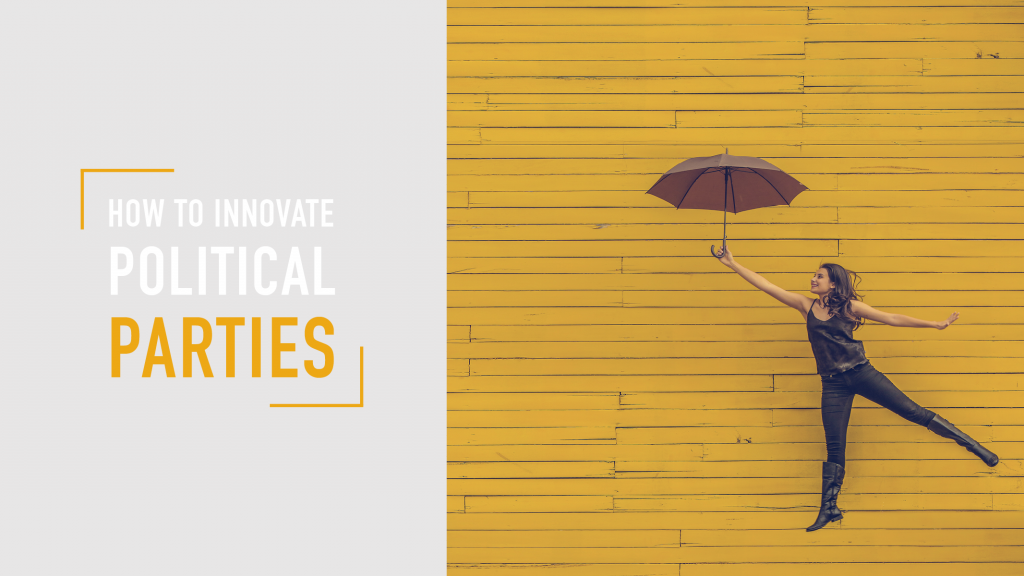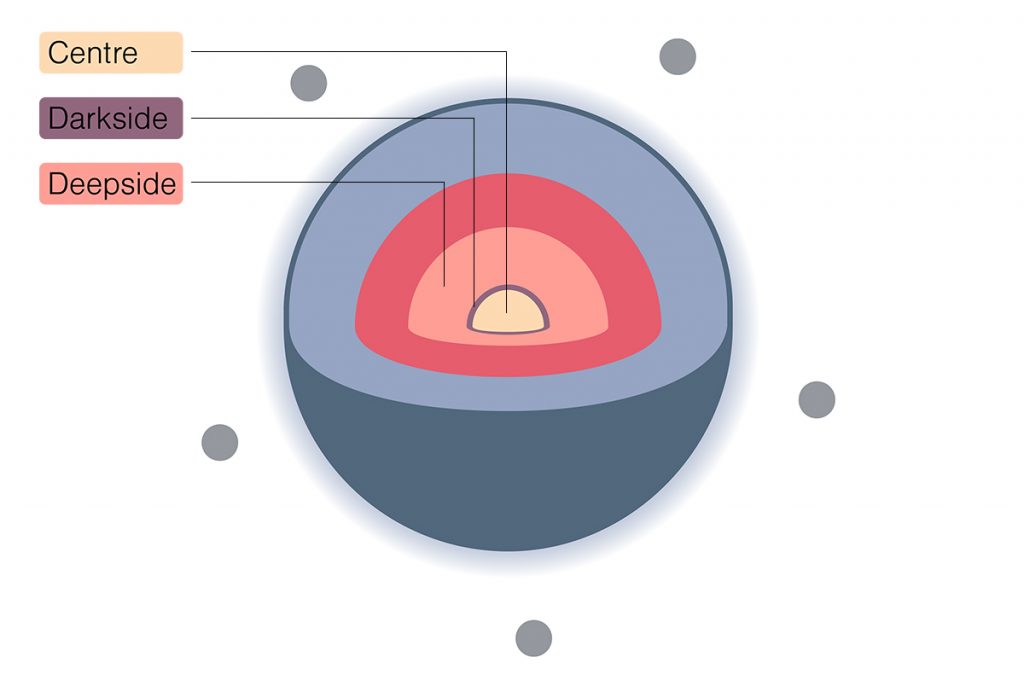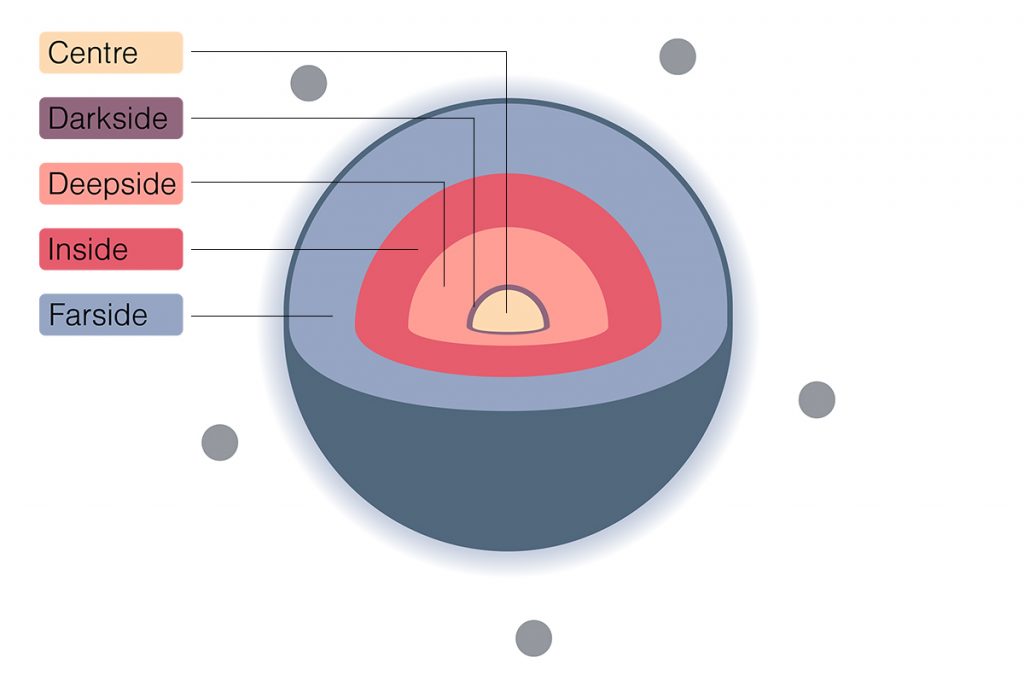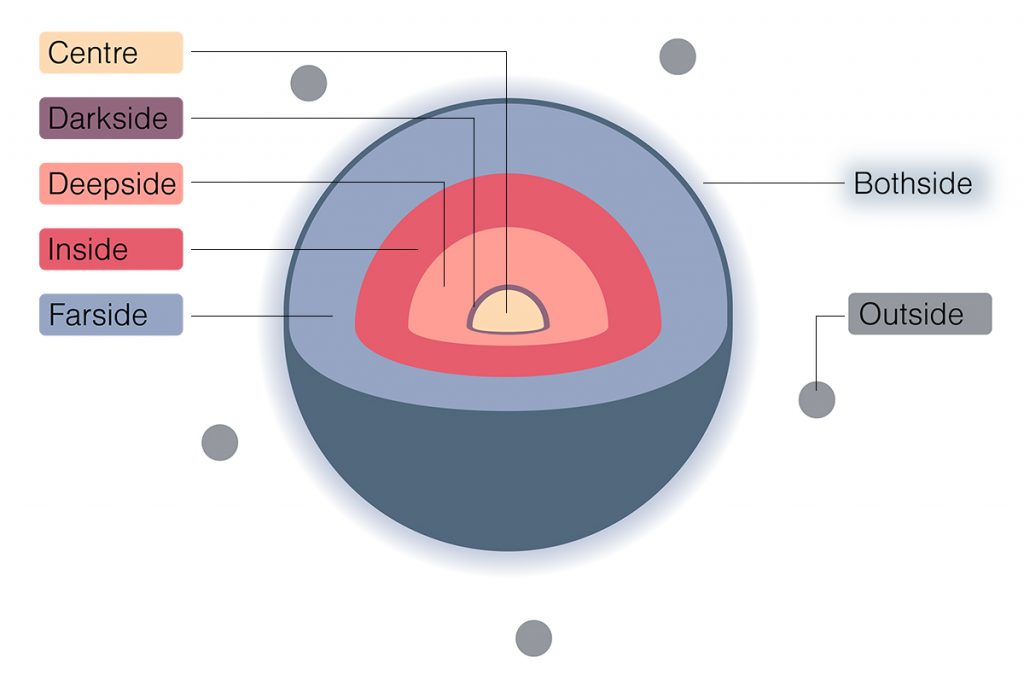To bring about change in a political party, new ideas must be generated, assessed, evolved, implemented, and scaled. But what are the sources of these ideas? Where does the new emerge in political parties? What spaces can you utilize, and which domains should you consider, when you want to innovate your party?
Based on research for our new project POLIS, and for Josef’s upcoming book “Political Intrapreneurship – How to innovate Political Parties from within”, we have created a spherical model of party innovation. In developing this model, we follow an open innovation approach: innovative ideas do not only stem from people inside an organisation, but also from external sources. The more ideas a political party is able to generate inside and source outside the organisation, the higher the chances of finding the few ideas that really have the power to increase the party’s performance. The more sources you utilise, the better, not all of them are equally obvious.
A spherical model of party innovation
Below you can find the prototype of our spherical model of party innovation – we would love to hear your thoughts on it!
In our model, we see seven sources of party innovation:
- Centre: The centre of political power in the party: the Board including the President or Chairperson, the Leader of the Parliamentary Party, the General Manager or Secretary, and other select Senior Executives. As the Centre is engaged in, to speak with Max Weber, defending power and extending it, often the Centre is not the main source of new, disruptive ideas (with some exceptions proving the rule) – but it can make new ideas happen. When it comes to innovation, the centre’s function is first and foremost an enabling one. Therefore, the centre’s relation to the other sources of innovation, both inside and outside the organisation, and the efficiency of the “driving belt” between them, is crucial for innovation. The question is: does a great idea reliably reach the centre, no matter where in the party it comes from? Depriving the centre of great ideas is like depriving the organisation’s brain of oxygen.
- Darkside: The senior advisors close to the Centre. They often operate under the radar, and “in the dark”. As they are in no political function or mandate, they are less constrained than the centre to come up with a fresh approach and can be a good source of innovative ideas. They are, however, accountable to and dependent on the Centre as a client. And the innovative quality of their advice depends on whether the Centre has recruited Yes-(Wo)men or people who stand their ground and effectively champion innovative ideas in the face of power. They can be a good source of innovative concepts and ideas, but are rarely the ones to follow-up and implement them (unless they are commissioned with a project).
- Deepside: The mid-level of political representatives and function owners, many of them at the regional and the local level. With their ears close to the ground as well as their knowledge of the logic of the political centre, they may act as facilitators and traders of new ideas between centre and farside. They can also act as partners in piloting new models and running experiments across the country or within the organisation. As some of them form their own small networks, they can also be a source of innovation themselves. Sometimes though they may also be running their own fiefdoms and act as veto players, slowing down or even blocking the flow of innovative ideas. Either way, they are a force to be reckoned with when it comes to innovating a political party (and need to be included in the process as early as possible).
- Inside: The professional staff and senior volunteers of the party. They spend a lot of time working with existing structures and processes, as well as content, and are close to the extended Centre of the party on a day-to-day basis. Therefore, they often have great ideas on how things could be improved or done differently. However, for them to feel confident to come forward with these ideas requires an organisational culture that values and incentivizes innovation, with open rooms and safe spaces for discussing new ideas.
- Farside: Members and activists in the semi-periphery and periphery of the party. They are the idealists at the front, on the streets, with lots of direct voter contact. As they do not hold high offices, they are mostly uninhibited by power constraints. As “lead users” of innovations, they are a great source of new ideas. For these ideas to translate into action, however, processes need to be in place that let the great ones among them reach the centre of the party, so they can get effectively enabled there. If they are not safeguarded, they might get lost deepside or inside the party. To avoid unnecessary frustration, the framework, scope and willingness for adopting new ideas and concepts should be clear from the very beginning.
- Bothside: Organisations who are inhabiting the outer atmospheres of the party, on the border to the outside space. At the edge of the internal and external world, they can look both ways and provide a stage to display and discuss ideas coming from the inside as well as from the outside. As boundary spanners, they can be useful platforms for exchange with civil society and business, and offer innovative impulses. These ideas, however, need to be picked up and pursued, as bothside organisations cannot implement them on their own.
- Outside: Sympathetic but independent organisations, like think tanks, foundations, academic institutions, social enterprises, businesses, unions or associations. Their innovative strength is their independence towards the parties, which leaves them unrestrained; and they bring more intellectual and organisational horsepower to the table than individuals. To implement scientific models into party structures and be effective, however, they need a direct line – a “transmission belt” – into the centre. As the centre’s time and attention are scarce, the number of relevant outside satellites is usually limited to 2-5.
In conclusion, there are many potential sources you can mobilise to innovate your political party. They all can contribute in their unique way to the innovation table. What would you say are the most important or overlooked sources? Looking forward to hearing your thoughts!







